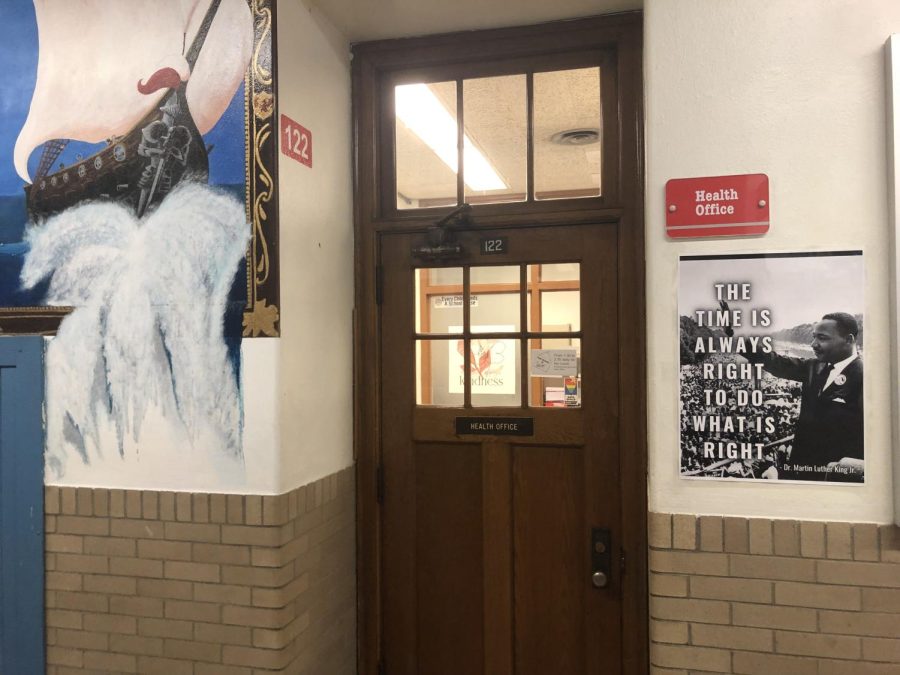Based on the numbers, Shaker girls kick Shaker boys’ butts.
From the PLAN and Ohio Graduation Tests for high school students to the Terra Nova Tests and Ohio Achievement Assessments for younger students, Shaker students take about 33 standardized tests during their school careers. According to district statistics, girls scored higher than boys on 10 of the 2011 tests, but boys’ scores never outranked girls’.
In view of these statistics, junior Danielle Nealon’s assumption that being a woman “would definitely help for college admissions” makes sense. However, in America and abroad, that isn’t always the case.
Traditional views of women as mothers and housewives have ebbed since World War I, spurring change in women’s societal roles. According to the National Center for Educational Statistics, in 2010 47 percent of 18- to 24-year-old women were enrolled in college, compared to just 39 percent of men in the same age range.
As a result, universities are struggling to ensure a balance between male and female students on campus. Counselor Eric Peterjohn said college admissions are thus more competitive for girls – no matter how high a girl’s test scores may be.
Women’s fight for educational equality goes beyond college admissions. According to CNN, 54 percent of unschooled children are girls, and 510 million women make up two thirds of the world’s illiterate population.
Karen Beckwith, professor of political science and women’s studies at Case Western Reserve University, said these disproportionate statistics don’t just disadvantage women. They also disadvantage countries at large, particularly developing nations. “[The] education of girls and women has a hugely powerful impact in exactly the way that you’d want in a developing country,” Beckwith said. “If you were putting together a team, you wouldn’t say, ‘I want half my team sick and illiterate.’ ”
A 2008 study by the World Bank, an international organization dedicated to aiding developing nations, found similar data. Results showed increased female education led to improvements in family life, from health to finances.
However, these recognized benefits have not led to change. Around the world, female education faces opposition. In October 2012, a gunman shot Malala Yousafzai, a 14-year-old Pakistani women’s education activist, on a school bus. The shooter worked for the Taliban, a fundamentalist organization that closed more than 200 girls’ schools in 2009 while keeping boys’ schools open, prompting Yousafzai’s public protests.
Even where there is no violence, there may be inequality. Christine Jeong, a 15-year-old South Korean student who currently lives in Nairobi, Kenya, wrote in an email interview that women in Kenya “generally are thought to be people who stay at home, look after their kids, or go to work . . . as a cook/house help.”
Korean women also face gender stereotypes. “[Women] are supposed to be feeble, woman-like, calm, composed and hard-working,” Jeong wrote.
In America, women have dispelled many of those gender roles, considering themselves and being seen by others as men’s equals.
“Men and women are definitely equal in intelligence,” junior Cedric Maye said.
However, the fight for college admissions remains. This struggle made headlines in 2006 when Jennifer Delhunty Britz, Dean of Admissions at Kenyon College, published an open letter in the New York Times apologizing that “the fat acceptance envelope is simply more elusive for today’s accomplished young women.”
“The reality is that because young men are rarer, they’re more valued applicants,” Britz wrote. “What are the consequences of young men discovering that even if they do less, they have more options? And what messages are we sending young women that they must, nearly 25 years after the defeat of the Equal Rights Amendment, be even more accomplished than men to gain admission to the nation’s top colleges?”
But Britz leaves out one important aspect: certain interests, namely science and engineering, can make women more valued applicants. Women are notorious minorities in these fields; at Shaker, 46 percent of science students are girls, but AP science classes are only 34 percent female. This shortage makes science-oriented women hot commodities to college admissions boards.
“Females that want to study math or science in college have an advantage in the college process because there are not a lot of females going into these subjects,” Peterjohn said.
However, being a woman in a male-dominated field comes with its own struggles. “It’s harder for women to get recognized, so women have to achieve more than men,” said Kathleen Kash, chairwoman of Case Western Reserve University’s Physics Department and Shaker parent. “There’s a lot of unrecognized bias against women in science still.”
Similar divisions exist in high school. Senior Rachel Marek, one of three girls in her 14-student AP Physics Electricity and Magnetism class, wishes more girls took science-related classes. “It would be nice,” Marek said, because she would enjoy the social company and believes more girls should challenge themselves in science. “But it’s not necessary.”
At a recent robotics competition at Cleveland State University, “there were very few [girls], compared to the number of boys,” Marek said.
According to 2011 OGT results, however, the lack of female participation in math and science doesn’t reflect their skills in those subjects. While girls’ scores did indeed triumph on the OGT Reading and Writing tests on average, the OGT Math test – a historically male-dominated subject – showed no distinction in gender achievement.
The test scores didn’t surprise science teacher John O’Verko. “My experience has shown that girls are every bit the equal in science and engineering,” he said.
“At this age . . . I see more females take their education seriously,” O’Verko said. But if college admissions pit male and female applicants against each other, those serious women may still be shunted into the waitlist abyss.





